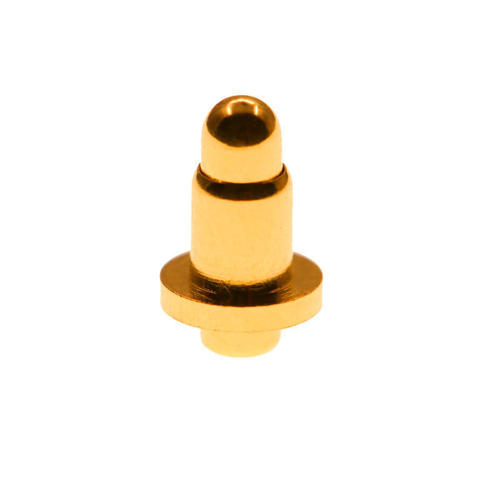Time:2025-10-16 Views:1 source:News

The needle tip design of pogopin probes is a crucial aspect that directly impacts the electrical connection quality, durability, and compatibility with mating components. A well - designed needle tip ensures reliable electrical contact, reduces wear and tear, and withstands various operating conditions.
The shape of the needle tip is one of the primary considerations. Conical - shaped tips are commonly used due to their self - centering properties. When inserted into a socket or contact pad, the conical shape helps guide the probe into the correct position, facilitating a stable and accurate connection. This shape also allows for a gradual increase in contact pressure as the tip penetrates deeper, ensuring a secure electrical connection. Spherical - tipped pogopin probes are another option, especially suitable for applications where minimizing surface damage to the mating component is crucial. The rounded surface of the spherical tip distributes the contact force more evenly, reducing the risk of scratching or deforming the contact surface.
Material selection for the needle tip is equally important. As mentioned before, materials with high electrical conductivity and excellent wear resistance are preferred. Gold - plating is widely applied to the needle tip surface. Gold not only provides superior electrical conductivity but also has a low coefficient of friction, which reduces the resistance during insertion and withdrawal, minimizing wear on both the tip and the mating contact. Additionally, the thickness of the gold plating needs to be carefully controlled. A thicker plating can offer better wear resistance and longer - term reliability, but it also increases the cost. Therefore, a balance must be struck based on the specific application requirements.
The surface finish of the needle tip also plays a significant role. A smooth surface finish reduces the contact resistance and improves the electrical conductivity. Advanced machining techniques, such as precision grinding and polishing, are used to achieve a fine surface finish. Moreover, some needle tips may undergo additional surface treatments, like passivation, to enhance their corrosion resistance and further improve the electrical contact performance. In applications where high - frequency signals are transmitted, the design of the needle tip needs to consider factors such as impedance matching. Specialized tip geometries and materials may be employed to minimize signal reflection and attenuation, ensuring high - quality signal transmission. Overall, the needle tip design of pogopin probes requires a comprehensive consideration of shape, material, surface finish, and application - specific requirements to achieve optimal performance.
Read recommendations:
High precision manufacturing of magnetic connectors
US standard to European standard charging gun adapter (without screws)